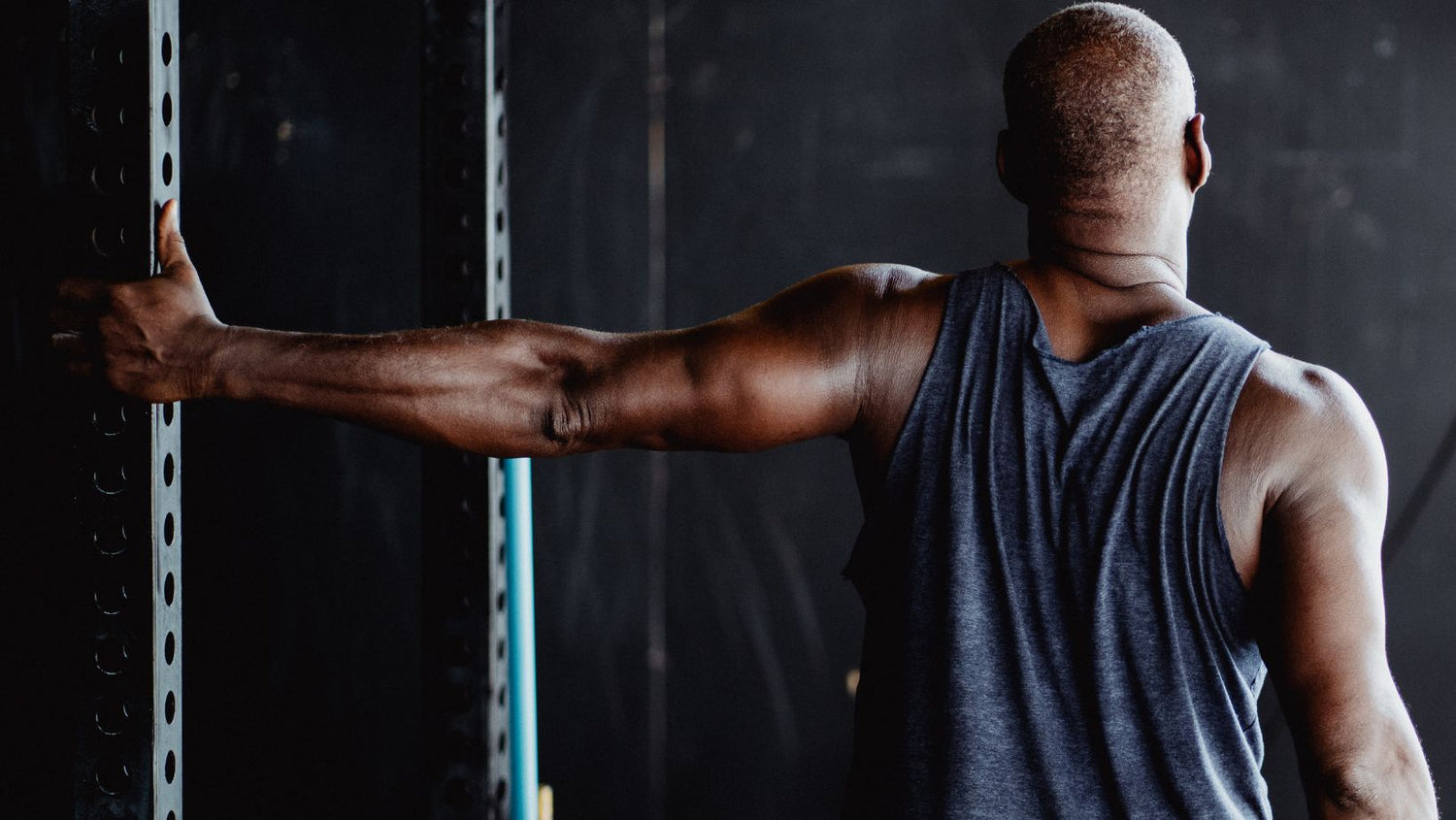Every fitness journey kicks off with a goal. If you aim to shed pounds, it's probably about dropping 30 of them. But if your goal is building up that bench press to 225 pounds, things get a bit more intricate.
Setting an estimated deadline for achieving your fitness aspirations is a great way to stay motivated. However, predicting when you'll hit that 225-pound bench press milestone isn't straightforward. Several factors come into play, influencing your journey's duration.
FACTORS SHAPING MUSCLE GROWTH SPEED
Muscle-building isn't a one-size-fits-all journey. Numerous factors, some within your control and others not, affect how quickly you'll reach your weightlifting objectives. These factors include:
YOUR STARTING POINT: Newbies in the weightlifting game have a more extended path ahead compared to seasoned bodybuilders recovering from injuries. The latter group tends to regain their strength quickly as they retrain their muscles. As a newcomer, you're essentially starting from scratch, which means not only muscle growth but also muscle learning.
YOUR BODY WEIGHT: Your initial body weight makes a significant difference in your powerlifting journey. Heavier individuals usually possess more muscle mass, providing greater strength potential. For instance, if you weigh 200 pounds and aim for a 225-pound lift, it's relatively manageable. But if you're lighter, say around 170 pounds, lifting 225 becomes a more significant challenge. You'd need to gain an extra 75 pounds in lifting power, a process that can't be rushed.
ADEQUATE REST: Rest is an integral part of muscle growth. Your body needs rest to repair and stimulate muscle growth, replenishing lost nutrients. Inadequate rest can lead to overexertion, potentially causing injuries that set you back. Coupled with proper nutrition, rest is essential for recovery and progress.
GENETICS FACTOR: Genetics can play a role in muscle gain, particularly in terms of anabolic hormones like testosterone and human growth hormone (HGH). Genetic factors that lower the production of these hormones can indirectly affect muscle growth and repair. Additionally, proteins like α-actinin-3 (ACTN3) in fast-twitch muscle fibers are necessary for forceful contractions used in weightlifting. Genetic variations affecting ACTN3 may hinder your strength capabilities.
WORKOUT CONSISTENCY: The frequency of your gym visits makes a substantial difference in how fast you'll reach your fitness goals. If you can hit the gym five days a week, you'll likely see quicker results than someone going three times a week. Furthermore, the type of exercises you choose can impact your progress. Focusing solely on upper body workouts may yield significant muscle gains, but cardio-centric routines can lead to slower muscle development. Achieving a balance in your workout regimen is vital for overall fitness.
BEST MUSCLE-BUILDING EXERCISES
When it comes to boosting your bench press and overall strength, bench presses are essential but shouldn't be your sole focus. Incorporate these ten strength-building exercises into your routine for faster gains:
- Pullup: Utilize gym equipment to perform pullups. Grip the bar with your hands shoulder-width apart, suspend your feet, engage your muscles, and pull yourself upward until your chin surpasses the bar. Slowly lower your body to complete one repetition.
- Deadlifts: Whether with a barbell or dumbbells, deadlifts are effective. Bend at your hips, pick up the weight from the floor, lift it, and stand up, then lower it to complete one repetition.
- Pushup: A versatile bodyweight exercise, pushups work multiple muscle groups. Place your palms flat on the ground, stretch your legs behind you, keep your body elevated and straight, and lower yourself by bending your elbows. Push back up to the starting position.
- Barbell Pullover: Lie flat on a bench and reach backward behind your head with a barbell, then return to the starting position.
- Bent Over Rows: Using either a barbell or dumbbells, stand as if for a deadlift but maintain a bent-over position as you lift the weights towards your chest.
- One-Arm Row: Employ a bench and a dumbbell. Bend over with one knee on the bench and hold a dumbbell in one hand. Lift the weight toward your hip by bending your elbow, then slowly lower it. Switch sides and repeat.
- Dumbbell Curl: Stand upright, holding dumbbells with palms facing up, and curl the weights towards your chest while keeping your elbows close to your sides.
- Chest Flys: Perform this exercise either standing or lying down with dumbbells, extending your arms straight in front of you and then moving them out to the sides before returning to the starting position.
- Overhead Press: Using a barbell, stand with the bar at chest height and press it overhead until your arms are fully extended, then return it to chest level.
- Farmer’s Walk/Carry: Typically done with dumbbells, carry weights at your sides and take small, quick steps for a designated distance, then return.
CUTTING VS. BULKING
You've likely encountered the terms "cutting" and "bulking" in your research, but how do they relate to your lifting progress? Let's delve into these concepts before addressing their connection to your weightlifting journey.
CUTTING FOR FAT LOSS: Cutting involves eating at a calorie deficit, aiming for fat loss while preserving muscle mass. If you have excess body fat, cutting is typically your starting point. This phase usually lasts 2-4 months, aiming to lose 0.5–1.0% of body weight per week. Your workouts during cutting will often involve cardio and High-Intensity Interval Training (HIIT) to stimulate fat loss and elevate your resting metabolic rate (RMR). Include cardio exercises 3-5 days per week, coupled with lighter weightlifting sessions on other days.
BULKING FOR BUILDING MUSCLE: Bulking is about gaining muscle without excessive fat gain. It entails consuming a calorie surplus, eating more calories than you burn during workouts. If you're underweight or fairly lean, you should start with bulking. Muscle building is a more extended process than fat loss, so bulking may last 6 months or longer. Determine your calorie surplus to see a weekly weight gain of 0.25–0.5% of your body weight. While bulking, focus on weightlifting most days, but incorporate 1-2 days of steady-state cardio to minimize fat gain.
CONNECTING CUTTING AND BULKING TO WEIGHT LIFTING

Cutting and bulking aren't isolated phases; rather, they're cyclical. Regardless of your goals, you can't sustain bulking indefinitely. As you progress in your fitness journey, you'll alternate between these phases. Lifting 225 pounds or more is a significant achievement that requires more than just bench pressing.
Whether you commence with cutting or bulking, maintaining a clean, healthy diet and allowing sufficient rest remains constant. Cutting and bulking aren't beginner strategies. Newcomers should focus on making better dietary choices and gradually increasing workout intensity. Once you're comfortable with your diet and exercise habits, consult a professional fitness instructor to incorporate cutting and bulking into your plan.
HOW LONG TO BENCH 225 POUNDS?
Based on what we've discussed, anticipate lifting an extra 5-8 pounds each month with dedication and consistency, over approximately a year or more. Building strength demands patience, so choose workouts like pull-ups, bent-over rows, and deadlifts to expedite muscle gain. Remember to prioritize rest and maintain a diet that suits your body. Stay on this path, and you'll likely achieve the results you desire from your fitness journey.






